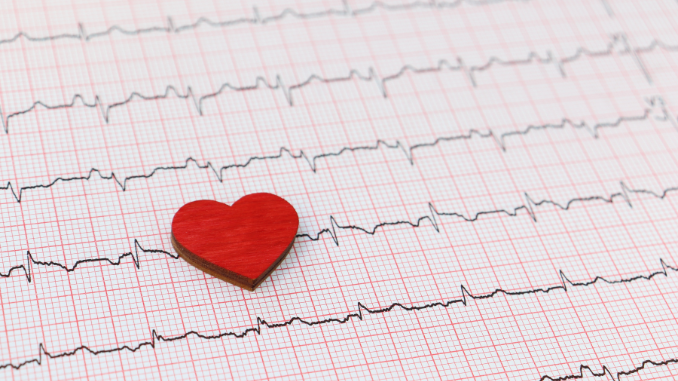How to Reduce Risk of Heart Disease: Evidence-Based Strategies for Lasting Health
Introduction
Heart disease remains one of the top threats to global health, but it doesn’t have to be inevitable. At Alliance Research Institute, we believe in bridging cutting-edge science with practical prevention. While genetics and age play a role, many of the major drivers of heart disease are under your control. In this article, we dive deep into how to reduce risk of heart disease — from lifestyle shifts to medical monitoring — so you can take tangible steps toward lasting cardiovascular health.
Understanding Heart Disease Risk: What You Can & Can’t Change
Your risk of heart disease is shaped by two broad categories:
Non-modifiable factors — your age, sex, genetic predispositions, and family history.
Modifiable factors — those you can influence: high blood pressure, cholesterol, blood sugar, obesity, diet, physical activity, smoking, alcohol, stress, sleep.
Scientific studies (for example, large cohort analyses and meta-analyses) consistently show that a cluster of modifiable risk factors accounts for a large fraction of first heart attack risk — meaning you have meaningful leeway to alter your path.
Strategy 1: Dietary Choices Matter
What you eat (and avoid) directly affects many pathways in cardiovascular health — from blood lipid levels to inflammation, vascular function, and oxidative stress.
Foods to focus on:
Fruits, vegetables, legumes, whole grains — fiber, antioxidants, minerals
Healthy fats — olive oil, nuts, seeds, fatty fish rich in omega-3s
Lean proteins — fish, poultry, legumes, low-fat dairy (if included)
Nuts and seeds — for healthy fat and protein
Foods to limit:
Saturated fat, trans fat
Added sugars, sugary beverages
Processed foods with high sodium
Refined grains
Diet patterns to adopt:
Mediterranean diet
DASH diet
Plant-forward or flexitarian approaches
Actionable tips:
Cook meals at home
Use herbs/spices instead of salt
Slowly replace white rice, white bread, and refined grains
Swap sugary drinks for water, herbal teas, or infused water
Strategy 2: Regular Physical Activity
Exercise isn’t optional — it’s one of your most potent tools. It influences blood pressure, insulin sensitivity, lipid profiles, endothelial (vessel wall) health, weight, and more.
Guideline recommendations (evidence-based):
≥ 150 minutes/week moderate aerobic activity or ≥ 75 minutes/week vigorous activity
Strength training ≥ 2 days/week
Break up sedentary time with frequent movement
Incorporate incidental movement like stairs, walking, errands
The trick is consistency. Even divided 10-minute bouts add up. Over months, these become habits that sustain benefit.
Strategy 3: Eliminate Tobacco Use
If you smoke, quitting is among the most powerful steps you can take:
Smoking causes direct vascular damage, raises inflammation, accelerates plaque formation.
Risk reduction begins quickly; within months, circulation and vascular health improve.
Avoid secondhand smoke exposure as well.
Use multi-modal support: counseling, pharmacotherapy, behavioral support, group programs.
Strategy 4: Weight Management & Body Composition
Carrying excess adiposity, particularly visceral fat, increases risk even beyond just “overweight.” The metabolic impact of fat, especially around the abdomen, harms insulin sensitivity, lipid metabolism, and inflammation.
Aim for modest, sustainable weight loss (5–10% of baseline)
Combine dietary adjustments + physical activity
Focus on reducing waist circumference
Monitor trends over time
Strategy 5: Control Blood Pressure, Cholesterol & Glucose
Risk factors like hypertension, dyslipidemia, and elevated blood sugar are central in the pathway to heart disease.
Blood Pressure (BP):
A critical driver of vascular injury
Monitor at home and in clinical settings
Lifestyle first; if needed, introduce medications
Cholesterol / Lipids:
Target LDL reduction, manage HDL and triglycerides
Use dietary, exercise, and pharmacologic tools
In high-risk situations, add statins, ezetimibe, or newer agents
Glucose / Insulin / Diabetes:
Prevent progression from prediabetes
In those with diabetes, maintain evidence-based glycemic targets
Consider newer drugs with cardiovascular benefit when appropriate
Each of these domains interacts synergistically: improving one often helps others.
Strategy 6: Moderate Alcohol, If Any
While some observational studies suggest small benefits with light alcohol use, the risks often outweigh them. Excess consumption raises:
Blood pressure
Triglycerides
Risk of arrhythmias
Weight
If you drink, do so within guideline limits — or not at all if that’s safer for you.
Strategy 7: Prioritize Stress, Sleep & Psychosocial Health
Emotional and mental health are not “extras” — they are integral to cardiovascular well-being.
Stress / psychosocial factors:
Chronic stress, depression, and anxiety each correlate with higher risk
Interventions: meditation, cognitive behavioral approaches, social support, therapy
Sleep:
Insufficient or poor-quality sleep (and sleep apnea) are strong risk enhancers
Aim for 7–9 hours nightly
If you snore, wake gasping, have daytime sleepiness — evaluate for sleep disorders
Strategy 8: Continuous Monitoring & Screening
Behavioral changes are powerful, but tracking and adjusting is crucial.
Key metrics to monitor:
Blood pressure
Lipid profile
Fasting glucose / HbA1c
Body weight, waist circumference
Kidney, liver, thyroid, metabolic panels
ECG or imaging, when indicated
Next steps:
Work with your physician or cardiologist
Adjust interventions (lifestyle + medications) over time
Use risk calculators to guide intensity of therapy
Real-World Examples & Roadmaps
Here are two illustrative scenarios:
Scenario 1: Sedentary professional with borderline risk
Introduce standing breaks (5 min/hr)
30-min brisk walk after work
Swap refined carbs → whole grains
Monitor BP & lipids
After 3 months, reassess, possibly include strength training
Scenario 2: Smoker with elevated cholesterol & overweight
Make smoking cessation the top priority
Apply diet overhaul (Mediterranean/DASH)
Begin walking; gradually add resistance training
Monitor metabolic markers
If cholesterol remains high, begin statin therapy
Target gradual weight loss over 6–12 months
Summary & Takeaways
Reducing the risk of heart disease is not about a single “magic bullet” — it’s about a constellation of coordinated, evidence-based strategies. Lifestyle interventions (diet, activity, weight, quitting smoking, stress sleep) lay the foundation, while monitoring and, when necessary, medical therapy provide precision. Over time, even modest improvements compound into meaningful risk reduction.
At Alliance Research Institute, our mission is twofold: advancing medical science and empowering individuals with knowledge. While we conduct and support clinical trials, personal prevention remains one of the greatest tools we all have.
We hope this guide — how to reduce risk of heart disease — helps you or your loved ones take actionable steps today.



